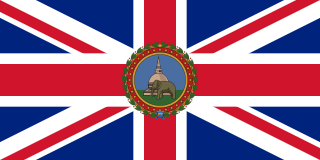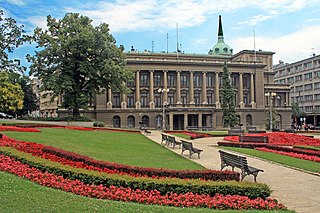Politics of Sri Lanka takes place in a framework of a semi-presidential representative democratic republic, whereby the President of Sri Lanka is both head of state and head of government, and of a multi-party system. Executive power is exercised by the government. Legislative power is vested in both the government and Parliament. For decades, the party system has been dominated by the socialist Sri Lanka Freedom Party and the conservative United National Party. The Judiciary is independent of the executive and the legislature. The Politics of Sri Lanka reflect the historical and political differences between the three main ethnic groups, the majority Sinhala and the minorities Tamils and Muslims, who are concentrated in the north and east of the island.

Chandrika Bandaranaike Kumaratunga is a Sri Lankan politician who served as the fifth President of Sri Lanka, from 12 November 1994 to 19 November 2005. The country's only female president to date, she is the daughter of two former prime ministers and was the leader of the Sri Lanka Freedom Party (SLFP) until the end of 2005. In 2015 she was appointed as the chairperson of office for national unity and reconciliation.

The President of the Democratic Socialist Republic of Sri Lanka is the Executive branch head of state and head of government of the Democratic Socialist Republic of Sri Lanka and commander-in-chief of the Sri Lanka Armed Forces.

The Parliament of the Democratic Socialist Republic of Sri Lanka is the supreme legislative body of Sri Lanka. It alone possesses legislative supremacy and thereby ultimate power over all other political bodies in the island. It is modeled after the British Parliament.

The governor-general of Ceylon was the representative of the monarch in the Dominion of Ceylon from the country's independence from the United Kingdom in 1948 until it became the republic of Sri Lanka in 1972.

Sir Oliver Ernest Goonetilleke was a civil servant, diplomat and politician. He later served as an important figure in the gradual independence of Ceylon from Britain, and became the third Governor-General of Ceylon (1954-1962). He was the first Ceylonese individual to hold the vice-regal post. He was a member of Ceylon Civil Service.

The Governor of Ceylon was the representative in Ceylon of the British Crown from 1795 to 1948. In this capacity, the governor was president of the Executive Council and Commander-in-Chief of the British Forces in Ceylon. The governor was the head of the British colonial administration in Ceylon, reporting to the Colonial Office.
The Commander of the Army is the title of the professional head of the Sri Lanka Army. The current Commander of the Army is Lieutenant General Mahesh Senanayake.
The Cabinet of Sri Lanka is the council of ministers that form the central government of Sri Lanka. It is responsible to and answerable to parliament. The current cabinet is the Sirisena cabinet.

Temple Trees, is the official residence of the Prime Minister of Sri Lanka. It is located in Colombo, Sri Lanka. Several recent Presidents have used it as their official residence too.
The Prime Minister's Office is a ministry of the Government of Sri Lanka. It provides the administrative and institutional framework for the exercise of the duties and responsibilities vested in the Prime Minister of Sri Lanka. From 1947 to 1978 it was the most powerful office within the government. However, after the creation of the executive presidency in 1978 the post of Prime Minister became more or less nominal and functions as a deputy to the President, with a few exceptions.

Fort is the central business district of Colombo in Sri Lanka. It is the financial district of Colombo and the location of the Colombo Stock Exchange (CSE) and the World Trade Centre of Colombo from which the CSE operates. It is also the location of the Bank of Ceylon headquarters. Along the foreshore of the Fort area is the Galle Face Green Promenade, built in 1859 under the governance of Sir Henry George Ward, the Governor of Ceylon during British colonial administration. Fort is also home to the General Post Office, hotels, government departments and offices.

Ravindra Sandresh Karunanayake, MP is a Sri Lankan politician. A Member of Parliament for the Colombo District, he served as the Minister of Foreign Affairs from May 2017 to August 2017, Minister of Finance from 2015 to 2017, and Cabinet Minister of Commerce and Consumer Affairs from 2001 to 2004.

Pallewatte Gamaralalage Maithripala Yapa Sirisena is a Sri Lankan politician, the seventh and current President of Sri Lanka, in office since January 2015. Sirisena is Sri Lanka's first president from the North Central Province of the country and does not belong to the traditional Sri Lankan political elite.

Gamini Lakshman Peiris is a Sri Lankan politician and academic. Former Cabinet Minister of External Affairs and a former member of the Parliament of Sri Lanka.
Queen's Cottage is a country house near Nuwara Eliya, Sri Lanka. It is the vacationing and country residence of the President of Sri Lanka. Located within the limits of the Nuwara Eliya Municipal Council along the Queen Elizabeth Drive, it is a protected monument under the Antiquities Ordinance.


















